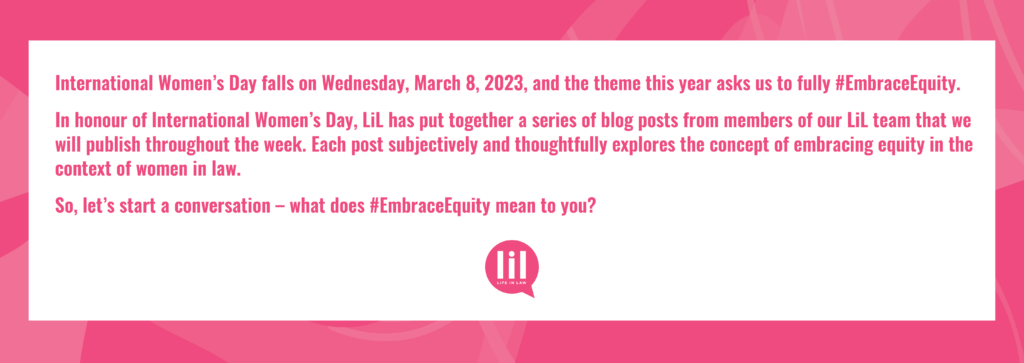What Organizations Get Wrong About Imposter Syndrome and How to Fix It
Hi, it’s me, you’re not the problem. It’s your workplace. What organizations get wrong about imposter syndrome and how to fix it.
One of the most pervasive themes in the current dialogue about equity and advancing women in the workplace is imposter syndrome, and the many ways feelings of self-doubt, inadequacy and unworthiness serve as a powerful barrier to women’s full and equitable participation in the workplace. The phenomenon is especially pronounced among women in leadership. A recent KPMG study found that 75% of 750 high-achieving women executives across diverse sectors report having personally experienced imposter syndrome at some point in their careers. Almost as many believe that their male colleagues do not experience imposter syndrome to the same extent as women. When asked how they overcame feelings of imposter syndrome, just over 70% of women executives identified the support of a respected advisor or mentor as a critical factor. Tellingly, less than half of them identified specific structures or initiatives within the workplace itself as decisive to overcoming the feelings of unworthiness and unpreparedness that for too long have kept women from moving into the C-suite.
No one should be surprised to learn that most women leaders frame their response to imposter syndrome in personal terms rather than through the lens of structural or systematic barriers. That’s because, since the time the concept was first formulated in the late 1970s, we have framed imposter syndrome in exclusively individualist terms. As Ruchika Tulshyan and Jodi-Ann Burey have noted, “imposter syndrome puts the blame on individuals, without accounting for the historical and cultural contexts that are foundational to how it manifests in both women of color and white women.” [“Stop Telling Women They Have Imposter Syndrome,” Harvard Business Review, February 11, 2021]
The point isn’t so much that we should stop telling women they have imposter syndrome. Rather, workplaces should be asking why high-achieving women feel this way in the first place despite their demonstrated achievements. And, we should start asking what needs to change for them to stop feeling this way. As Tulshyan and Burey put it, framing things through the lens of imposter syndrome “directs our view toward fixing women at work instead of fixing the places where women work.”
Making the workplace a more genuinely inclusive and empowering space for women, and especially for women from systemically marginalized groups, demands that we take action in the places where women work. Fixing the places where women work demands a paradigm shift in our thinking about imposter syndrome. But more than that – we need a paradigm shift in how we understand the structures of power that condition where and how women work. This includes acknowledging – and then dismantling – the powerful dynamics of bias, discrimination, and exclusion that fuel feelings of self-doubt and inadequacy in the first place.
Organizations often seem built to resist change. Organizational design is premised on concentrated sources of power and clear lines of authority in decision-making and accountabilities. In the highly integrated, complex organizations of today’s economy, structurally marginalized voices struggle to be heard. Even seemingly inclusive and responsive workplace cultures can fall prey to what we might call a perception bias: the perception that our organizations, and especially our leadership structures, are more diversified and inclusive than they are in fact. Growing awareness of the importance of adopting EDI strategies in the workplace, along with legal requirements aimed at eliminating bias and discrimination in employment practices, can create a paradoxical situation. The newfound visibility of EDI initiatives in the workplace, championed and projected by leaders to both internal and external audiences, often fuels the perception of meaningful change.
But perception bias can obscure the persistence of structural barriers to genuinely inclusive workplaces. In effect, we let perception rather than data, drive our decision-making about change in the workplace. And if we perceive our workplaces to be changing more fundamentally than they are, it follows that we will fail to see the structural rather than personal sources of imposter syndrome.
The most powerful antidote to perception bias is evidence – quantifiable, measurable data – of a workplace that is getting more genuinely diverse and inclusive. And the collection of this data must be accompanied by other “inward actions” aimed at dismantling feelings of inadequacy in the workplace. This includes building relationships of trust with women, especially those from equity seeking groups; having an EDI plan that is substantive and not performative in nature and demanding accountability when change is elusive.
For now, it is the understanding that how women feel in the workplace is not a diagnosis to be borne by a single individual; it is a systemic issue. And it is the systemic issue that requires our focus, attention and action.
About the Author

Yola Ventresca is Managing Partner of the Lerners LLP London, Ontario office and a LiL Volunteer. She prides herself on her advocacy to support, mentor and sponsor women in private practice. Her practice includes representing regulated health professionals, post-secondary institutions and employees and employers in litigation. She is also the founder and chair of the firm’s workplace investigation practice.
